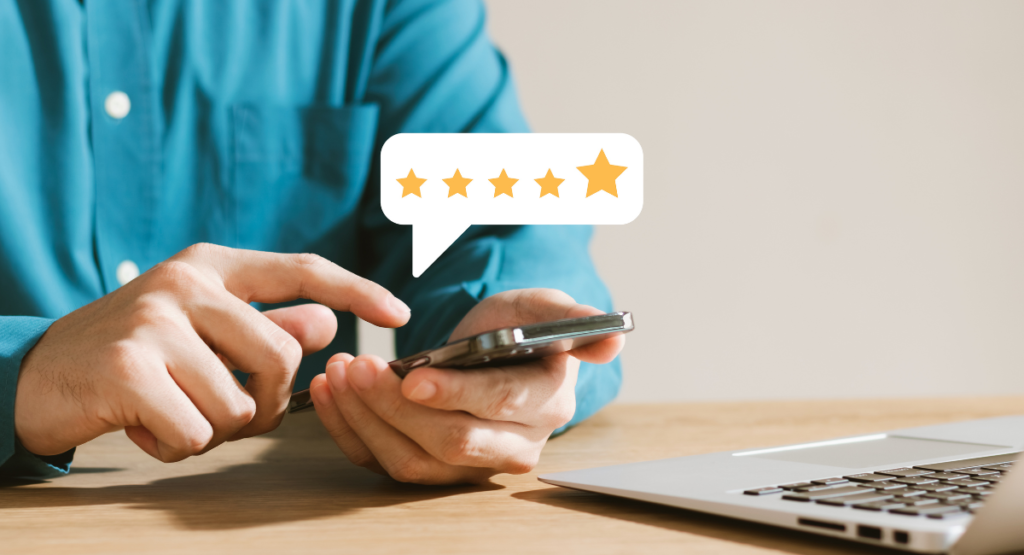The 15 Best Marketing Channels to Maximize Your Ad Spend & Boost Business Growth
No matter what type of business you own, marketing is key to building your brand’s reputation. However, the right marketing channels help your advertisements and promotions to reach the right people.
A great message is wasted if it’s never heard. When marketing your brand, you need to target where your target audience actually listens. Otherwise, your return-on-investment (ROI) will take the hit.
To determine the best marketing channels for your brand, you need to learn each channel’s particular benefits. This article will introduce you to a variety of popular channels and what makes them effective so you can build a marketing strategy that really works.
What is a Marketing Channel?
Marketing channels are the platforms and mediums you use to communicate messages about your brand, services, and products to your target consumers.
Marketing channels shouldn’t be confused with distribution channels. While a marketing channel helps deliver content from a company to an audience, a distribution channel is a way your product or service reaches its end user.
Distribution channels mostly matter when a sale is the expected final outcome. On the other hand, strategic channel marketing also promotes your company by increasing brand awareness and credibility.
So how do effective marketing channels help your brand? With a solid channel marketing plan, your message travels more directly to your target market. This can help you reach a more responsive audience, which reduces ad spend waste and increases lead generation and sales.
Benefits of Marketing Channels for Growing Businesses
Connect your business with potential customers: By leveraging multiple marketing channels, small businesses can reach potential customers that may have otherwise been inaccessible. It’s important to identify the right platforms to engage with the ideal audience and create campaigns that are tailored to each channel.
• Reach Larger Audiences
Business owners can tap into their target’s interests, habits, and preferences to get in front of more people and expand their customer base. This will help drive more traffic and ultimately increase sales.
• Build Brand Awareness
With multiple marketing channels, small businesses can effectively promote their company’s unique selling points and make a lasting impression on consumers. This helps build recognition for the business and strengthen relationships with customers.
4 Types of Marketing Channels
It’s important to know the differences between different types of marketing channels before you put your marketing strategy together. Let’s go over 4 main types of channels.
1. Free Marketing Channels
Free or low-cost marketing channels help you get your message out without spending anything. These include organic search engine optimization (SEO), content marketing, influencer marketing, social media, press releases, and more.
2. Paid Marketing Channels
Paid channels, on the other hand, require some marketing budget, although pricing can vary greatly depending on your specific goals. Examples of this type of channel include sponsored posts or ads on social media platforms such as Facebook and Instagram, display ads on websites with high traffic, Google Ads campaigns, and email newsletters.
3. Digital Marketing Channels
Digital marketing strategies help you grow via internet-based advertising. This includes website design and development, mobile app development, targeted advertising campaigns on popular search engines like Google.
4. Traditional Marketing Channels
Although these tried-and-true methods may not be as effective for today’s modern businesses due to their expense when compared with digital alternatives, they can still play an important role in some cases. Traditional marketing channels include direct mailers, radio advertisements, and TV commercials.
13 Marketing Channel Examples
Online marketing channels can benefit almost any brand these days. As 90% of U.S. adults use the internet, digital channels reach a wide range of demographics. No matter who your target customers are, they’ll likely encounter ads online.
But while many marketing channels fall under the digital category, some are more well-suited to your audience than others. We’ll explain how and why four popular digital marketing channels work so you can maximize your channel marketing success.
1. Social Media Marketing

Social media marketing is a key component that small business owners should consider when crafting their digital marketing strategies. Social media involves creating and sharing content on platforms such as Facebook, Twitter, Instagram, etc. to engage customers and build relationships with them.
The benefits of social media marketing are numerous. When done correctly, it can result in increased brand recognition, lead generation and higher website engagement. You can also use social media to understand your target audience better by tracking what kind of content resonates with them. Furthermore, the cost of running a successful social media campaign is relatively low compared to other forms of advertising.
Because the number of people using these platforms continues to grow rapidly, it can be very difficult for businesses to stand out amongst all the noise. Additionally, every platform has its own set of rules and algorithms which can be hard to keep up with if you’re just starting out in this arena.
2. Search Engine Optimization (SEO)

Great website content—which may include your blog posts, landing pages, webinars, and more—can naturally demonstrate your industry credibility. When you use search engine optimization (SEO) to deliver the content, you’ll see more traffic from consumers who were already searching for companies like yours.
Unlike social media, this marketing channel is always indirect. Instead of using SEO to promote content, you subtly insert traffic-increasing keywords, backlinks, and more to increase organic traffic. When people Google certain search terms related to your brand, proper SEO causes you to rank more highly in their search results. That means your content reaches consumers when they’re already interested, making SEO one of the best channels for gaining high-quality leads.
As online research continues to precede most purchases, search-engine-optimized content marketing can secure your growth.
3. Pay-per-click (PPC) ads
PPC advertising is another marketing channel that helps your message reach online searchers. However, instead of continuously drawing consumers over time, it brings a relatively high volume of leads to your site during a marketing campaign. This is because it artificially promotes your website or landing page for highly specific audiences—as long as you pay for the service.
Note that PPC ads require a greater financial investment. As the name suggests, you’ll pay per each click you receive. Luckily, when you’re strategic about what keywords you target, how much you spend, and where you drive customers, this channel can increase your ROI. That’s because it can connect you to a higher percentage of high-quality leads than SEO.
4. Event Marketing

Local events can be great opportunities for your target market to come face-to-face with your company’s team. When you promote your business at a booth or by otherwise speaking to potential buyers in the community, this marketing channel shows customers the humans behind your brand. When you throw your own event, you’ll give locals a taste of the customer experience they can have with you.
Event marketing is a highly effective way to build brand recognition and customer loyalty because in-person interactions encourage attendees to connect with your company. Plus, it shows your commitment to your target community while helping you reach local leads.
5. Print Ads
Print ads may seem like a questionable marketing channel, as print media declines by the year. However, promoting your brand through a newspaper or magazine with the right target audience can still be effective. Whereas online ads are frequently scrolled past, print ads tend to capture more attention by feeding your message to readers through a tangible medium.
Print ads are also the most trusted advertising channel, which means they give your message heightened credibility.
6. Podcasts

Podcasts are an increasingly popular and effective marketing channel for small business owners. A podcast is an audio show, typically streamed or downloaded via the internet, which covers topics related to your business and resonates with your target audience. Podcasts allow business owners to connect with their customers in a more personal way than traditional written content, as they can be heard speaking directly to their customers.
The main benefit of podcasts is that they are relatively inexpensive to produce compared to more traditional forms of advertising. Additionally, podcasts can be produced on demand, meaning that you can publish new episodes as often as you like without having to worry about the time constraints of other media channels such as television or radio. The downside of podcasts is that it can take some time for them to gain subscribers; you may need to record several episodes before your target audience begins listening regularly.
7. Influencer Marketing

Influencer marketing is a valuable tool for small business owners looking to increase their reach and expand their customer base. It involves working with influencers—people who have built-up large followings on social media—to promote your brand, product, or service. To do this, you’ll typically pay influencers to share content about your business or give them free products in exchange for reviews and posts about your company.
The biggest benefit of influencer marketing is its ability to get you in front of a large potential audience quickly and cost-effectively. Moreover, because people tend to trust influencers more than traditional ads, the process can lead to higher engagement rates and long-term customers. The downside of influencer marketing is that finding the right people can be difficult and time-consuming, as well as expensive if you’re paying them for their services. Additionally, it can be hard to track ROI with this approach if you don’t have the right analytics tools in place.
8. Video Marketing

Video marketing is an effective marketing channel for small business owners that can offer a powerful return on investment. It involves creating and sharing videos related to your business with the aim of capturing more customers or promoting brand awareness.
Video marketing offers many advantages over traditional print or digital content because it is more engaging, easier to digest, and allows businesses to show off their products or services in an interesting and memorable way. Video content also has the potential to reach a wider audience due to its shareability across social media platforms.
That being said, there are a few drawbacks associated with video marketing. Creating high-quality videos requires significant time and resources, which may not be feasible for every business.
9. Word-of-Mouth Marketing

Word-of-mouth marketing is one of the oldest and most reliable forms of communication. It involves people talking about your business with others in their network or social circle. This can be done through word of mouth, referrals, online reviews, and social media sharing.
Word-of-mouth marketing is a powerful way to build trust and credibility with potential customers. When someone shares their positive experience with your business, it encourages others in their network to check it out for themselves. Word-of-mouth marketing also enables you to reach more people than traditional advertising methods as it’s not limited by geography or demographics.
While word-of-mouth marketing can be an effective tool for small businesses, its success depends on customer satisfaction. Therefore, it’s important for small business owners to ensure that they provide top-quality service and strive for satisfied customers at all times
10. Affiliate Marketing
Affiliate marketing uses middlemen such as bloggers and influencers to communicate your message to consumers. This channel helps you partner with influential people in your industry who share your brand in a positive light—usually through their blogs or social media channels.
This marketing channel works because the majority of consumers trust influencers much more than brands. By partnering with affiliates, you gain real people attesting to your company’s value.
In most cases, you’ll pay your affiliates a commission every time you make a sale, so you may not have a big upfront cost.
11. Email Marketing

Email marketing is a powerful and cost-effective method of reaching potential customers. It is a type of direct digital marketing that uses email to promote products, services, and events. By using email marketing, small business owners can easily and quickly send targeted messages to their target audience in order to increase engagement and generate leads.
The primary benefit of email marketing is its broad reach. It allows small businesses to build relationships with their email list by sending personalized and relevant content directly to their inboxes. With the help of segmented audiences, businesses can further customize messages to fit specific needs.
On the downside, however, the competition is high with this marketing channel. It can be hard to stand out in an inbox full of notifications from other brands like yours. If not done correctly, email campaigns can be quite expensive due to the costs associated with designing templates or paying for email marketing software.
12. Text Marketing

Text marketing allows businesses to send text messages of promotional offers, discounts, new product releases, and more directly to their customers’ mobile phones.
This marketing channel is cost-effective (it can be much less expensive than other forms of advertising), trackable (business owners can measure how many people open and read their messages), and it boasts a 98% open rate. Additionally, text messages can be sent easily from anywhere with internet access which makes them a convenient way for small business owners on the go to reach their customers quickly.
Just make sure you do your research before you get started—business owners to familiarize themselves with business texting regulations before rolling out any campaigns.
13. Content Marketing
Content marketing is a powerful marketing channel that involves the creation and sharing of content in order to attract potential customers and build relationships with them. This content can include blog posts, eBooks, infographics, webinars, and more. Content marketing helps small business owners boost brand awareness and visibility, engage their target audience, generate qualified leads and sales opportunities, increase website traffic and online conversions, and more.
It’s important to note that content marketing requires a significant time investment to create quality content that meets the needs of its target audience. It also takes consistent effort over time to develop an effective content strategy that will help businesses achieve their desired results.
Marketing Channels Best Practices
As with any business growth strategy, it’s important to keep some best practices in mind as you start thinking about channel marketing. Here are a few tips:
Implement Customer Relationship Management (CRM) Tools
CRM tools are an essential part of any marketing channel strategy. They help to organize customer data, automate sales processes, and track customer engagement activities. By implementing CRM software, businesses can gain valuable insights into how their customers interact with their brands, which can then inform decisions about how best to optimize their marketing efforts.
Track and Measure Your Marketing Channel Campaigns
It’s important to keep track of the results of your campaigns in order to build effective marketing campaigns. Tracking metrics such as website visits, conversion rates, online reviews, etc., can provide vital insights into how well your campaigns are performing and allow you to make informed decisions about future marketing strategies.
Build Buyer Personas
A buyer persona is a detailed description of an ideal customer based on research and market data. It serves as a model for understanding the target audience better so that more effective messaging and personalization strategies can be used when designing campaigns.
Amplify Your Marketing Message
Whether you run an e-commerce site, a physical retail store, or something in between, the most effective marketing channels can give you a more powerful reach. As you build and implement the right multi channel marketing strategy for your goals, you’ll be better equipped to send your message in places where your target audience is listening.
The good news is: You don’t have to do it alone. Podium helps small and local businesses improve their online presence, start conversations with potential customers, and reach their target audience more effectively and efficiently. With the right tools in your toolkit, trying new marketing channels and growing your business will be a smooth and worthwhile process.
Interested in trying Podium for yourself? Start a free trial today—it’s risk-free, no strings attached.




